10 ecommerce brands that use AI to supercharge growth for their business

Artificial Intelligence (AI) is the hottest trend of the year (probably for the next few) and there’s no denying this disruptive technology is out to eat the world. But, let’s not forget that AI has the potential to be game-changing in driving business efficiency and taking over human workload. Businesses that have been quick to acknowledge this potential and jump on the AI bandwagon are undoubtedly better positioned for success in 2024 and beyond.
When it comes specifically to ecommerce, AI has proved to be worth its weight in gold ever since global online retailers have found success with it. Today, AI-driven growth strategies are no longer a good-to-have, but are starting to give ecommerce businesses a competitive edge that can really set them apart.
It’s exciting to see how first movers are driving tangible results by leveraging AI to their maximum advantage. If you’re looking for some inspiration on how you can get started with AI or are simply intrigued by what the best in the business is up to, this blog post is for you. We break down how the biggest ecommerce giants in the world are using AI to supercharge growth for their businesses. So, let’s get right into it!
Optimized dynamic pricing: Amazon
Amazon has always been a trendsetter when it comes to adopting emerging technologies and paving the path for disruptive growth. The ecommerce giant relies on AI-backed dynamic pricing algorithms to evaluate and update the prices of millions of products from its catalog in real time, multiple times a day. Sellers on Amazon can then rely on automation to dynamically adjust their prices in order to meet consumer demand, and keep up with shopping patterns and preferences, while maximizing profit margins and undercutting competition.
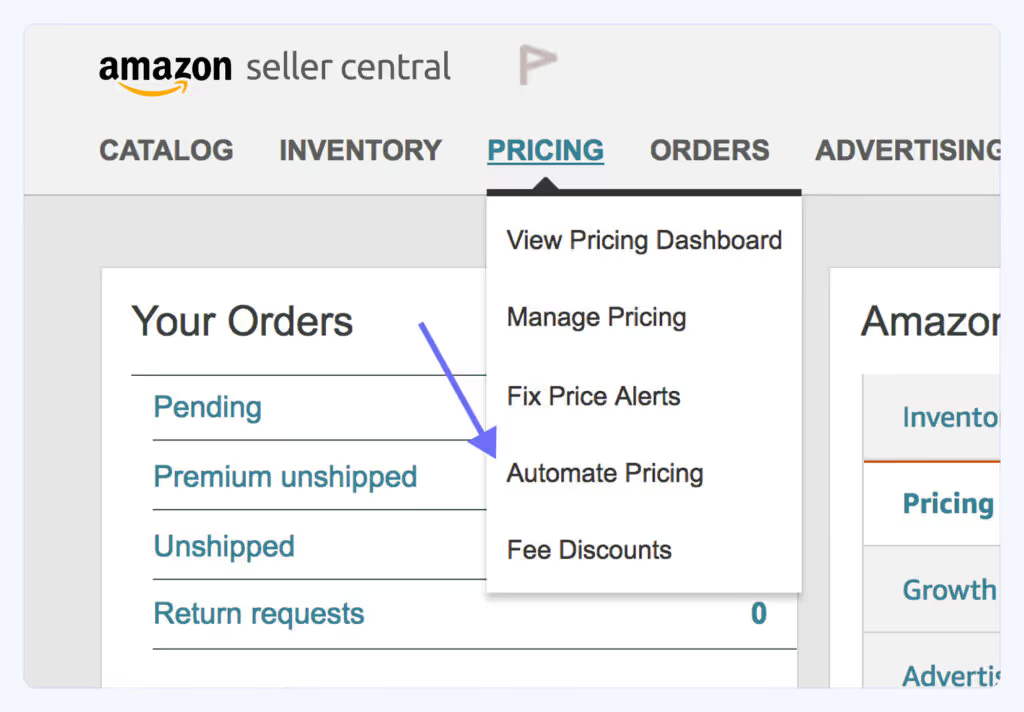
From historical and anticipated product demand to product availability and stock volume to customer buying behavior and competitor prices, Amazon’s sophisticated algorithms take a plethora of factors into account before suggesting optimized pricing for products.
Smarter inventory management: Walmart
Walmart uses AI and ML-backed self-driving specialized mechanical floor scrubbers that make their way through aisles scanning shelves to capture real-time images of products. These scrubbers operate at more than 95% accuracy and are trained to distinguish between brands and automatically alert stock rooms when a particular product reaches a predetermined level on the shelf so it can be marked “available” for online orders. If products are not available, associates are alerted in time so shelves can be restocked for upcoming orders.
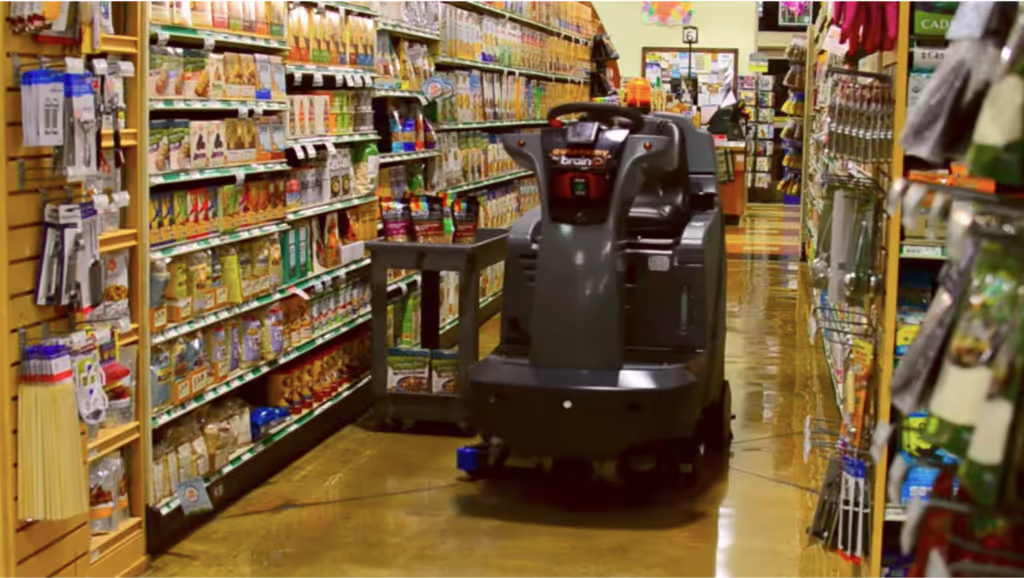
Streamlined supply chain: Carrefour
French retail behemoth Carrefour leverages AI to detect vast amounts of data from its stores, ecommerce sites, and warehouses to streamline its supply chains and improve inventory management. By integrating software developed by advanced analytics leader SAS into its supply chain, Carrefour was able to free up their teams’ bandwidth, which could then be diverted towards further perfecting their forecasting strategies to meet consumer demand and incrementally reduce waste.
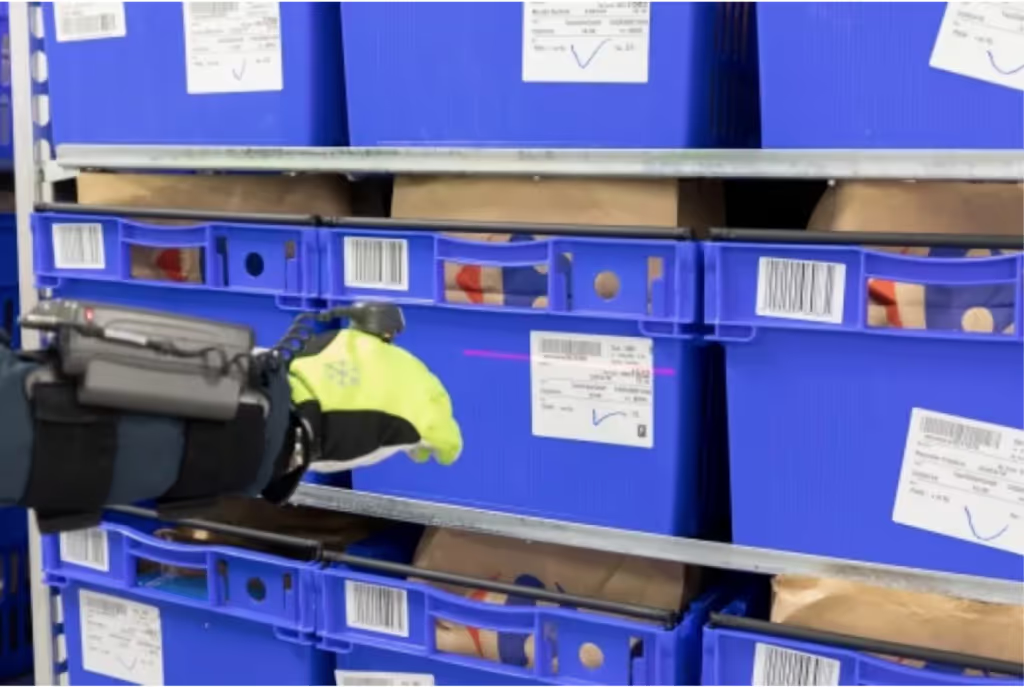
Shopping assistance with cognitive computing: North Face
In an effort to make their online shopping experiences more personalized, interactive, and engaging, North Face partnered with software solutions provider Fluid and IBM’s Watson cognitive computing technology to help expedite and redefine the shopping experience. How this works is that if a customer lands on the website looking for a jacket, the tool prompts a bunch of questions about what, where, and when the jacket is going to be used to recommend the best ones for the particular customer’s needs.
The AI-based tool analyzes massive amounts of data, including customer reviews, social sentiment, previous user preferences, expert recommendations, weather forecasts, activities, and so on to zero in on a few choices that are most likely to meet the shopper’s needs.
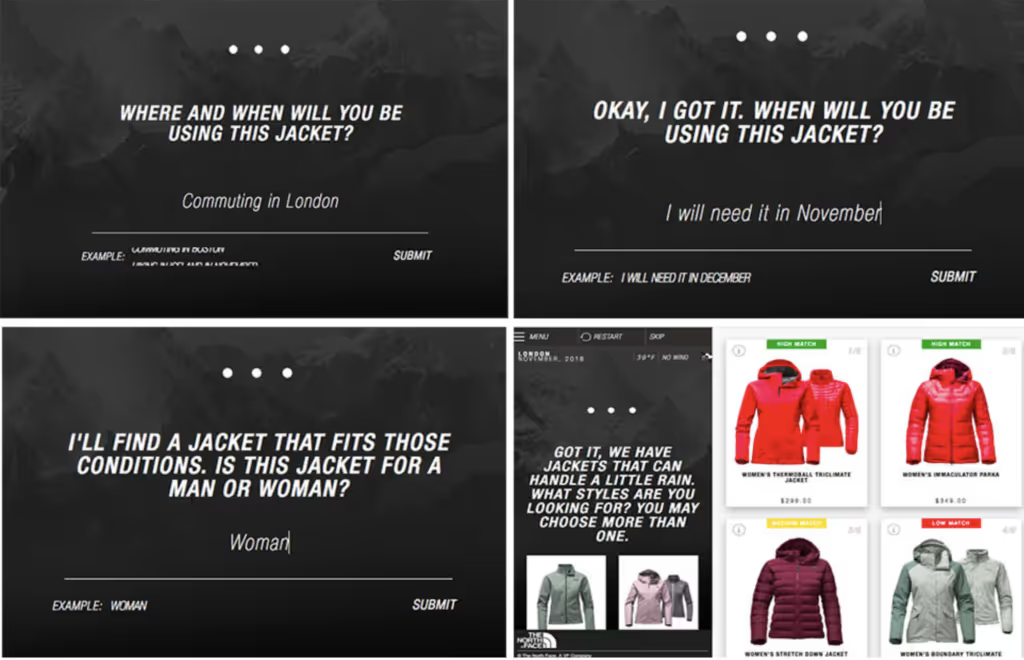
Immersive virtual try-On experiences: Sephora
When shopping online for cosmetics, the biggest apprehension most buyers have is not being sure about whether or not a particular product is likely to suit their complexion and facial features, and rightfully so. Sephora knocked it out of the park with their augmented readily-driven virtual try-on experience, developed in partnership with AR company ModiFace to solve for that single biggest challenge.
Whether customers want to try out a particular lipstick shade or check if a foundation matches their skin tone, they can virtually try and test the product out to see for themselves before committing to a purchase.

Redefined real-time support with chatbots: Whole Foods
A grocery retailer known for its healthy and organic produce, Whole Foods leverages AI to provide customers with an innovative way to discover interesting meal recipes by conversing with a robot chef via Facebook Messenger.
To find delicious and healthy recipes, all you need to do is kickstart a conversation on Messenger and drop in the emoji of the ingredients you have in mind. Within seconds, you’ll be presented with a specially curated list of recipes that feature the particular ingredient for you to explore.
The entire experience is built to redefine real-time support while offering an alternate and exciting way for customers to discover recipes.

Improved demand forecasting: Ikea
To reduce overhead costs associated with a poorly managed or inefficient supply chain, Ikea relies on an AI-based smart demand forecasting tool that helps uncover insights into anticipated demand for all their products, across their in-person and online operations.
The tool considers historical data on demand for each product as well as upcoming trends like seasonal shopping patterns, holiday season, festivals, interior design trends, and weather forecasts to accurately determine which of their products are likely to be more in demand in which of their locations. This allows them to make the necessary adjustments to their supply chain in order to reduce waste and stockouts.
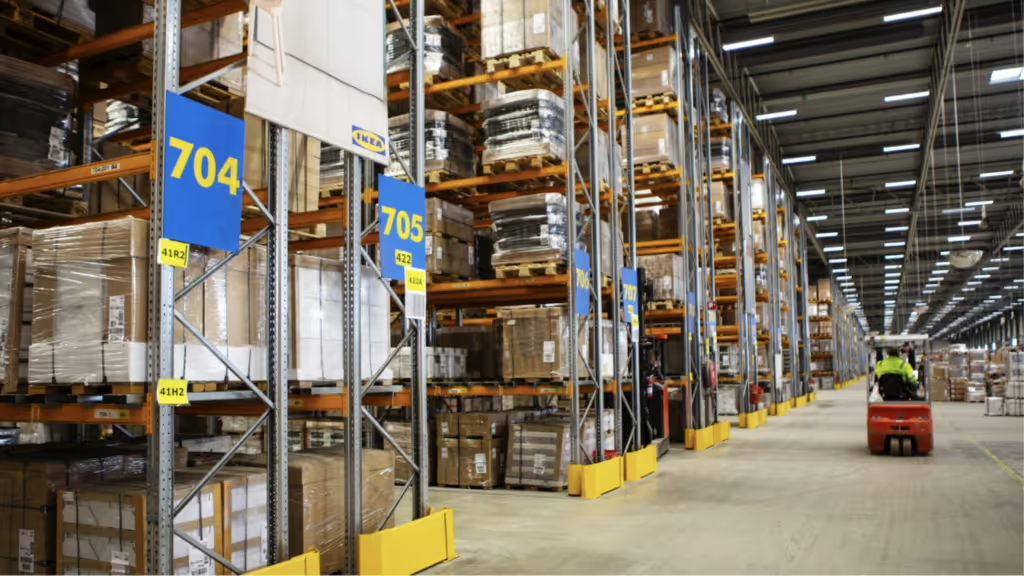
Reinventing community marketing: Casper
Casper’s always been known for its quirky marketing campaigns, and this one didn’t disappoint either. To help people dealing with insomnia and keep them company when they need it the most, Caper launched the world’s first bot - Insomnobot3000 which is only available to chat between 11 pm - 5 am. From bedtime stories to meditation to midnight snacks, you can talk to this bot about anything as if it were a real person.
The bot was programmed to sound as human as possible so people who have trouble falling asleep can confide in it and talk to it as a friend. This innovative idea helped the brand amplify its community marketing effort and establish a deeper connection with its potential customers.

Enhanced predictive analytics: H&M
In an effort to stay at par with global demand, the fast fashion retailer, H&M uses AI to predict fashion trends and determine spend analytics to understand what consumers are likely to buy and how much of it they need. Their AI-based systems are trained to capture trend data from search engines, blogs, and even runways of some of the fashion capitals of the world.
From colors and patterns to materials and fabrics, their algorithms are able to capture all relevant insights needed for designers to make more informed decisions. All of these efforts help them get a sneak peek into consumer preferences and thus, reduce waste and make more sustainable decisions.
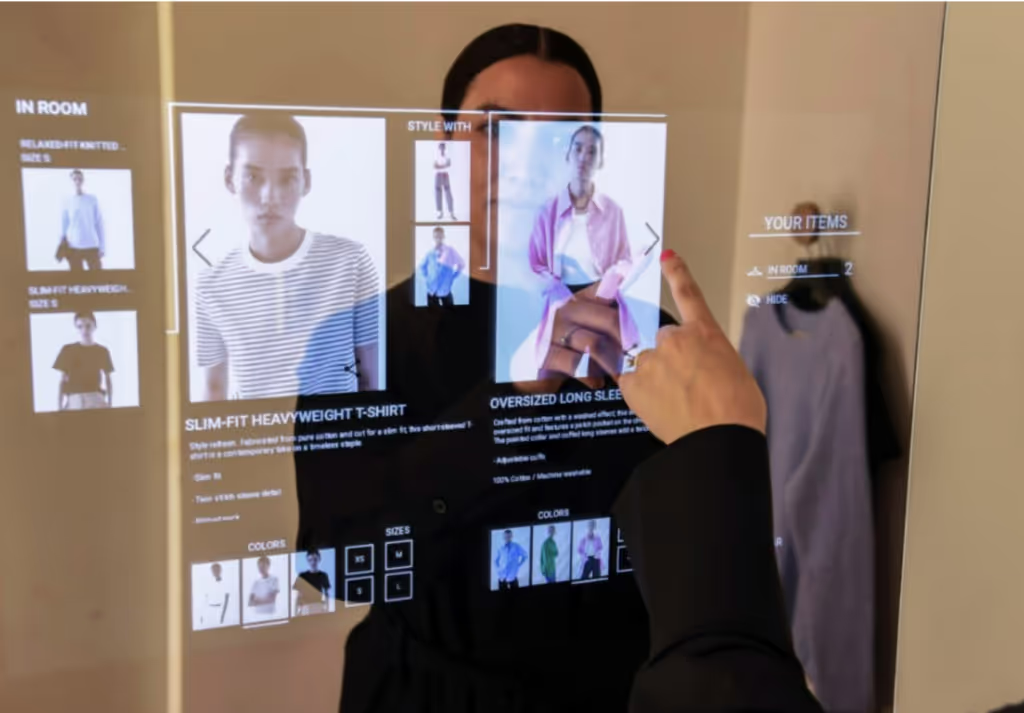
Personalized geo-targeting: Skandium
London-based furniture and home accessories retailer, Skandium caters to online shoppers from all across the world with dynamic content. No matter where you visit the site from, Skandium uses AI-based geo-targeting to personalize the content of their shopping site to customize the experience right from the moment you land on the site.
The banner on the homepage is changed dynamically based on where you are logging in from to provide the relevant information on shipping, duties, delivery timelines, etc. Take a look:
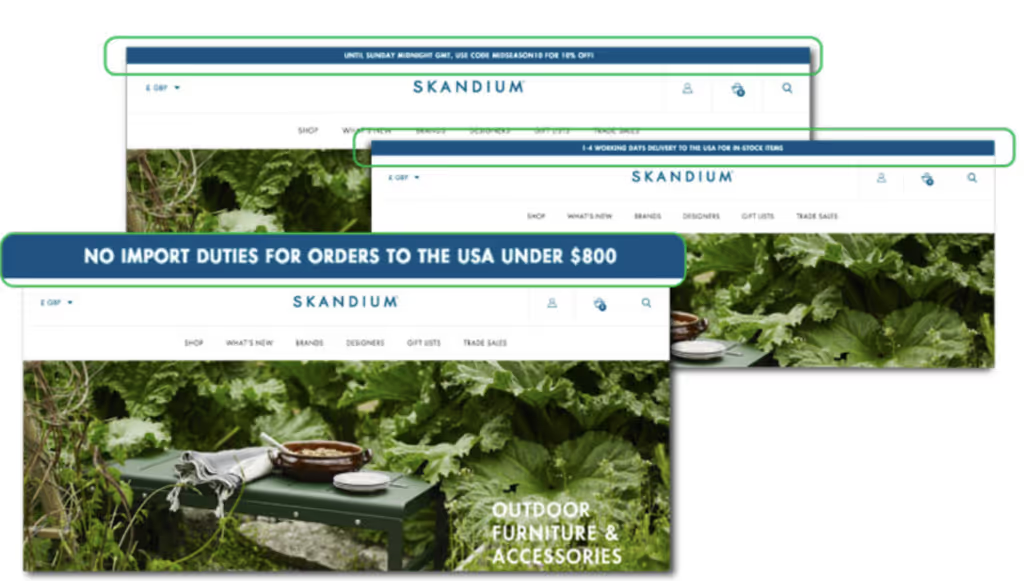
Are you ready to jump on the AI bandwagon?
The future of ecommerce is always going to be uncertain, but what we know for sure is that AI is going to continue to disrupt the world. Businesses that embrace this change and do so with agility are going to witness limitless growth in the coming years. There’s no time like the present to take the plunge and start incorporating AI into your day-to-day business operations and long-term strategies. We hope that the examples we shared in this blog post served as inspiration to help you take the leap and future-proof your ecommerce business.




